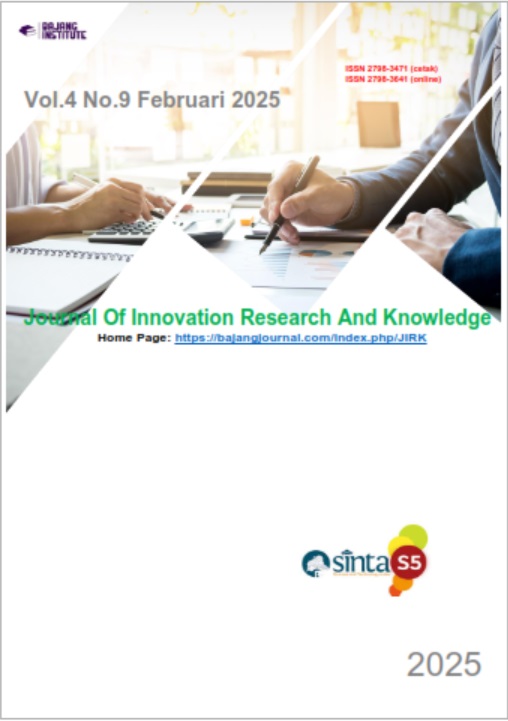LANGUAGE TRENDS ACROSS SOCIAL MEDIA
Keywords:
Social Media, Language, YoutubeAbstract
This research uses a qualitative descriptive approach to analyze the phenomenon of hybrid language and textism in YouTube comments. Hybrid language in digital communications includes code-mixing and code-switching, but only code-mixing is found in YouTube comments. Of the various types of code-mixing, the most dominant form is word insertion, namely inserting words from another language into the main sentence. This shows that users prefer mixing languages in the form of single words because it is more concise and efficient in fast and informal digital interactions. Meanwhile, textism is a form of deviation from standard spelling or grammar that is often used to speed up digital communication. In the textism category, acronyms are the most dominant form, used to save time and adapt to digital language trends. These findings indicate that in communication on social media platforms such as YouTube, efficiency and ease in conveying messages are the main factors in choosing the form of language used.
References
A. Karjus dan C. Cuskley, “Evolving linguistic divergence on polarizing social media,” Humanit. Soc. Sci. Commun., vol. 11, no. 1, hal. 1–14, 2024, doi: 10.1057/s41599-024-02922-9.
F. Shamim dan M. N. Riaz, “Impact of Multimodal Digital Media Communication on Generation Z’s Language Use and Literacy Practices,” Acad. Educ. Soc. Sci. Rev., vol. 3, no. 4, hal. 398–409, 2023, doi: 10.48112/aessr.v3i4.593.
M. Gorka, “The Meme as an Example of Carnivalized Internet Communication,” hal. 215–242, 2008.
M. Zaim, “Pergeseran Sistem Pembentukan Kata Bahasa Indonesia: Kajian Akronim, Blending, Dan Kliping,” Linguist. Indones., vol. 33, no. 2, hal. 173–192, 2015, doi: 10.26499/li.v33i2.36.
Nona Ruth Anjely Hutapea, “Code-Switching and Code-Mixing Found in a Youtube Channel Called Nessie Judge,” Sintaksis Publ. Para ahli Bhs. dan Sastra Ingg., vol. 2, no. 5, hal. 192–200, 2024, doi: 10.61132/sintaksis.v2i5.1022.
N. Hasanah, Y. Hudiyono, dan J. F. Agustian, “Analisis Variasi Bahasa Pada Komunitas Di Jejaring Sosial Whatsapp: Kajian Sosiolinguistik,” Adjektiva Educ. Lang. Lit. Stud., vol. 3, no. 2, hal. 26–32, 2020, doi: 10.30872/adjektiva.v3i2.1407.
L. Suadnyani dan I Komang Sulatra, “Types of Code-Switching Found on Nana Mirdad’S Video Blogs,” Yavana Bhasha J. English Lang. Educ., vol. 7, no. 1, hal. 33–40, 2024, doi: 10.25078/yb.v7i1.1832.
L. Fathi dan S. Sidgi, “International Journal of Language, Literature and Culture (IJLLC) The Process of Changing Everyday Language: How Society Changes Words,” Journal, vol. 1, no. 2, hal. 13–20, 2021, doi: 10.22161/ijllc.
M. De Choudhury dan E. Kiciman, “The language of social support in social media and its effect on suicidal ideation risk,” Proc. 11th Int. Conf. Web Soc. Media, ICWSM 2017, no. Icwsm, hal. 32–41, 2017, doi: 10.1609/icwsm.v11i1.14891.
C. Lloyd, “Semantics and Word Formation,” Semant. Word Form., 2015, doi: 10.3726/978-3-0353-0103-8.
H. Sadaf, B. Rasheed, dan A. Ahmad, “Exploring the Role of YouTube Lectures, Vlogs, and Videos in Enhancing ESL Learning,” J. Asian Dev. Stud., vol. 13, no. 2, hal. 657–670, 2024, doi: 10.62345/jads.2024.13.2.52.
S. POPLACK dan J. A. WALKER, “ Pieter Muysken , Bilingual speech: a typology of code-mixing . Cambridge: Cambridge University Press, 2000. Pp. xvi+306. ,” J. Linguist., vol. 39, no. 3, hal. 678–683, 2003, doi: 10.1017/s0022226703272297.
A. L. Drum, “Speaking Their Language : Textisms in Today ’ s Communication by,” 2015.















